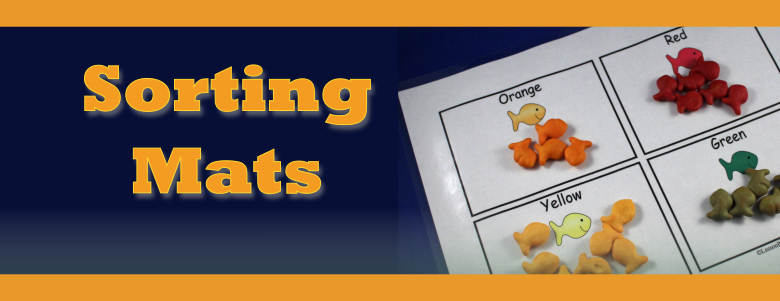
Sorting Mats
LessonPix allows users to create sorting mats with boxes containing pictures and/or words to help students sort small objects, picture cards, or word cards into categories. You may create sorting mats with 1 to 6 boxes on each page for sorting. For example, the user may make sorting mats that have only one box per page, allowing one full paper per category. Or, the user may print pages with 4 boxes allowing students to sort small snacks or small objects.
Here are some ideas of items to create sorting mats:
Snacks: Make snack mats that allow students to sort their snack item by color, size shape, item. For example...
- Goldfish Cracker Colors can be sorted by color
- Trail mix can be sorted by item- nut, cracker, m&m, pretzel
- Fruit salad can sort small fruit pieces
- Fruit snacks by color or shape
- Cereal can be sorted by color or shape
- Doll house furniture by room: kitchem, bedroom, bathroom
- Play items with matching community helper: things a firefighter uses, things a mailman uses, etc.
- Small toy animals by type: bugs and not bugs, farm animals and zoo animals, ocean animals and land animals
- Plants or animals?
- Living and nonliving (picture cards of plants, animals, machines, furniture, etc.)
- Food and not food
Sort by Attribute: Sorting small items by attribute / descriptions
- Color: Use 2-6 colors to sort specfic colored items.
- Size: Create sorting mats to sort items by size. ie: small medium, large; tall or short; long or short
- Shape: circle, square, cylinder, cube, etc.
- Comparitives: long, longer, longest; small, smaller, smallest
- Description: Hard or soft; fur or feathers; hair or no hair; 2 legs or 4 legs; rolls or slides down a ramp; magnetic and not magnetic
- Pieces: Break apart items and sort. For example - these children are "dissecting" a plant by cutting the pieces and sorting the parts into roots, stem, leaves, and flowers.
Dissect plants
Auditory Discrimination: students can compare how things sounds and sort into categories. For example
- Loud or soft
- Animal or machine
- Letter sounds that are voiced (b, k, v) or not voiced (h, p, t)
- Letter sounds that are long or short
- Same or different
Phonics: Students can sort small objects, picture cards, or word cards into groups. Here are some examples:
- Beginning letter - starts with a "m" or does not start with "m"
- Beginning sound - starts with /sh/ or /ch/
- Ending letter - ends with a "n" or "t"
- Ryhmes - rhymes with cat or rhymes with fish
- Word families - words that have the same ending (rhymes that are spelled the same way) ie "-at", "-ot" or "-it" words
- Vowels - short e words and long e words
- How many letters in the word, 3, 4 or 5?
- Syllables - words that have 1, 2, or 3 syllables
- How many parts: items divided into 2 pieces or 4 pieces
Free Sample of a sorting mat for sorting items that roll or slide down a ramp.
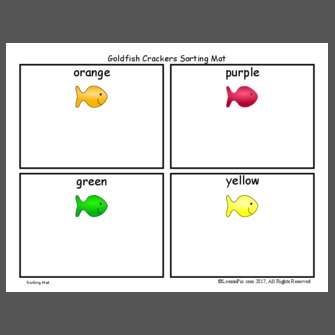
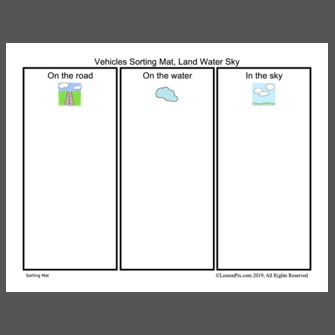
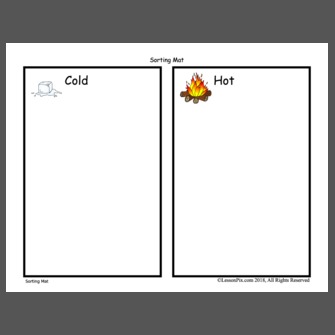


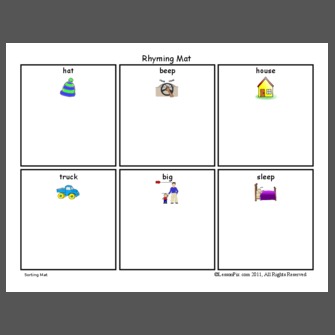
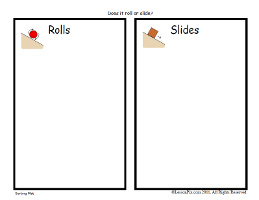
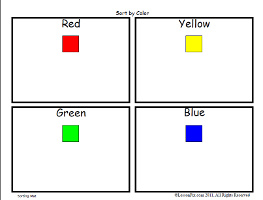
 Facebook
Facebook Twitter
Twitter Pinterest
Pinterest